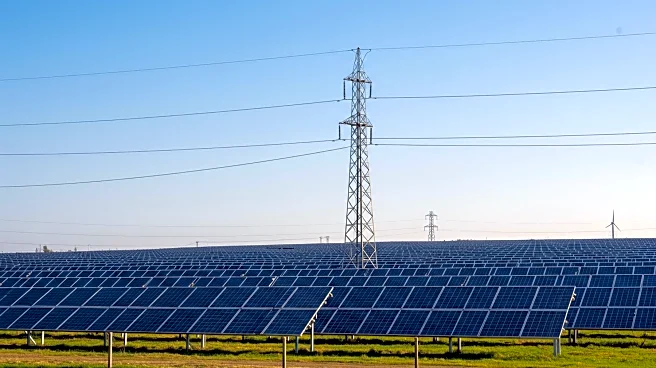What is the story about?
What's Happening?
The rise of artificial intelligence is fueling a data center boom in rural America, particularly in towns like Quincy, Washington. These centers promise economic benefits, including job creation and increased tax revenue, which have funded local infrastructure improvements such as new schools and hospitals. However, critics argue that data centers strain water and energy resources, potentially undermining climate goals. The debate highlights the tension between economic development and environmental sustainability, as communities weigh the benefits against the long-term impacts on natural resources.
Why It's Important?
The expansion of data centers in rural areas represents a significant shift in economic development, offering new opportunities for communities traditionally reliant on agriculture. The influx of jobs and tax revenue can transform local economies, providing funding for essential services and infrastructure. However, the environmental concerns associated with data centers, such as high energy and water usage, pose challenges to sustainability efforts. Balancing economic growth with environmental protection is crucial, as communities and policymakers navigate the complexities of modern industrial development.
What's Next?
As data centers continue to expand, communities like Quincy must address the environmental concerns associated with their growth. Local officials may need to explore alternative energy sources and implement policies to ensure sustainable development. The debate over data centers could influence broader discussions on climate policy and energy usage, prompting innovations in renewable energy and efficiency. Stakeholders, including businesses and environmental groups, will likely engage in ongoing dialogue to find solutions that balance economic and environmental priorities.
AI Generated Content
Do you find this article useful?













